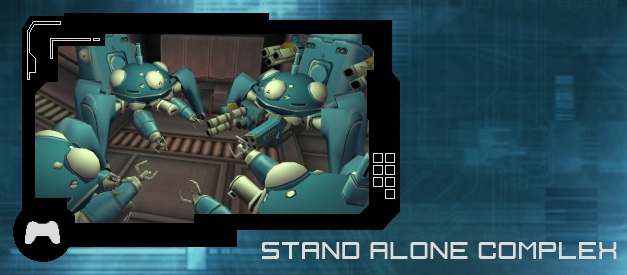
Of all the genres to pick from to have the Ghost in the Shell game be for Sony's new portable gaming system, why did they ultimately decide on it being a first-person shooter?
Having been tied to the Stand Alone Complex nomenclature like the PS2 version was a year earlier, maybe they decided to not make another third-person action game because it would have been too similar to its PS2 sibling. Another reason could have been because they didn't want to confuse consumers into thinking that it was just a port of the other game. No matter the reasoning, that's what we got for the next installment.
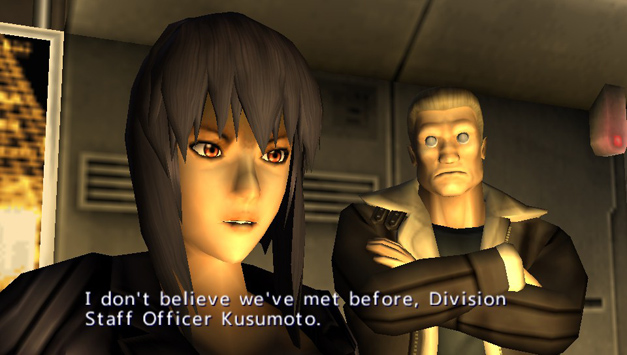
Considering the release of it was during the PSP's inaugural year, it must have been pretty impressive to see all of that tech crammed into a portable game. A fully 3D FPS, a full soundtrack that wasn't in chiptune, full motion cutscenes with voice acting, and local multiplayer game with up to eight players. That certainly sounds impressive, but that doesn't necessarily make it a great game.
Obviously the control scheme is the biggest crux as the PSP only has one analog stick for movement. By default, you move the character with the stick and turn the camera with the circle, triangle, square, and cross buttons. The d-pad is used for things like reloading and swapping weapons, while the actions for jump and trigger are reserved for the shoulder buttons. It's a finger dance, but it's the best solution for that type of game on hardware with a limited input interface.
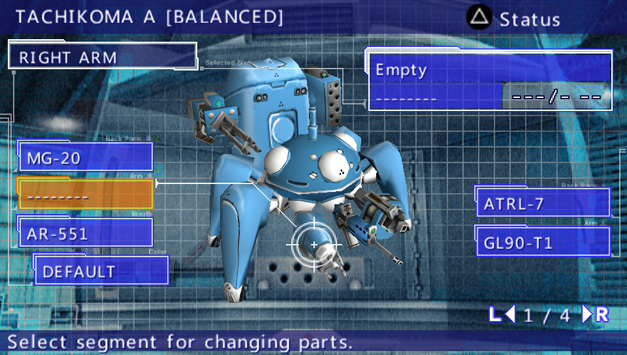
The story itself isn't too bad, but the whole declaration for independence from the state is getting a bit stale. This time it takes place in the area known as the Northern Territories -- a string of small islands just above Japan's northern main island of Hokkaido. During the world wars of the 21st century, Japan took back the islands of the Northern Territories from Russia. 20 years later, a group led by a soldier who was involved in taking back the islands is now seeking independence and will prove their seriousness by assassinating former cabinet minister Hiruma, who they feel is responsible for destroying the islands with his industrial and business decisions. They plan to assassinate him during a ceremony in the city of Berutarube for commemorating the recapturing of the islands. The assassination threat is the reason why Section 9 is involved.
To assist with the clunky FPS controls, each mission will have you be accompanied by a Tachikoma A.I. tank. During the mission briefing you have the opportunity to select which character you want to deploy: Kusanagi, Batou, Togusa, and Saito; and which Tachikoma to send along for support. Both the team members and the tachikomas have different strengths that could benefit a mission, so it's ideal to select the right partners for the job. Unfortunately you don't really know what's involved for a mission until you start it, so you may need to go back and reselect who you want to deploy.
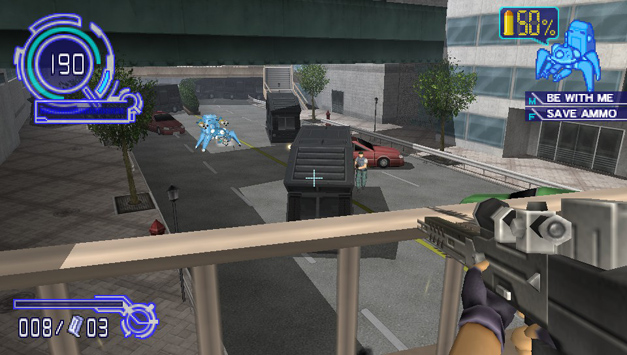
The Tachikoma you select will be an A.I. partner and can be ordered with basic commands at any time during the mission such as to have it follow you, go to one of the preassigned spots on the map, or have it go do its own thing. In addition you can order them to conserver their ammo or go hog wild with it. The four different Tachikomas have varying skill sets, but for the most part they are minor. The real advantage is selecting what weapons to assign to your Tachikoma.
The game is mission based and it allows you to replay missions you've already completed. Overall the story is like an OVA where a bundle of missions act like an episode for the TV show, having 6 episodes to play through with around 20 or so missions total. The story is mainly told through cutscenes, although there are some cybercomm discussions while playing a mission, but it's nowhere compared to what was seen in the PS2 game. Impressively, there is over an hour's worth of in-engine cutscenes. That's approaching Metal Gear Solid levels of time dedicated to cutscenes! And like the PS2 game, the dialog is dubbed with the same English voice actors for the TV show.
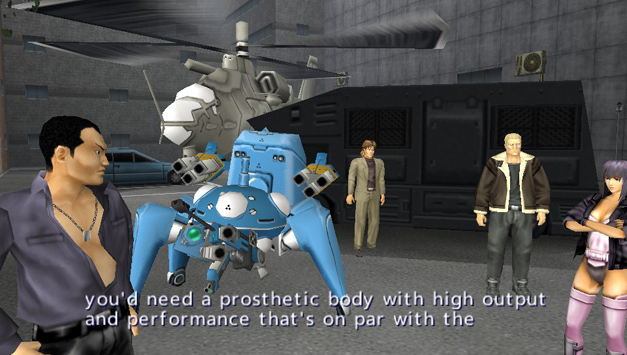
Following in the style the first game had where its soundtrack was a compilation of tracks created by a number of different DJs, the PSP game does the same thing too; however, its affect was less than stellar. While some DJs are legit artists like JLHA (DJ Kei) while others are a temporary trio group like FILTER FISH who stuck together long enough to finish this project. All of the listed composers for the soundtrack include JLHA, Hideyuki Kobayashi, VOMOS, FILTER FISH, KIREI, DELUA ANTI NORM, pull the plug, and Takahiro Nozaki [DIGILLA]. The tracks are actually really good, but unfortunately they are recycled a lot throughout the game, heard on many missions or during cutscenes, so towards the end of the game, you would have listened to most songs for the soundtrack about a dozen times.
With an impressive presentation, Ghost in the Shell: Stand Alone Complex for the PSP has a lot going on for itself. It probably made a huge splash at events like E3 touting all of the tech it was utilizing for a game designed for a portable system, but it ultimately suffers by incorporating a genre of gamming not suited for the platform. The notion of having the Tachikomas be more in the spotlight was a great idea, but maybe not in the style of a first-person shooter that it ended up becoming.
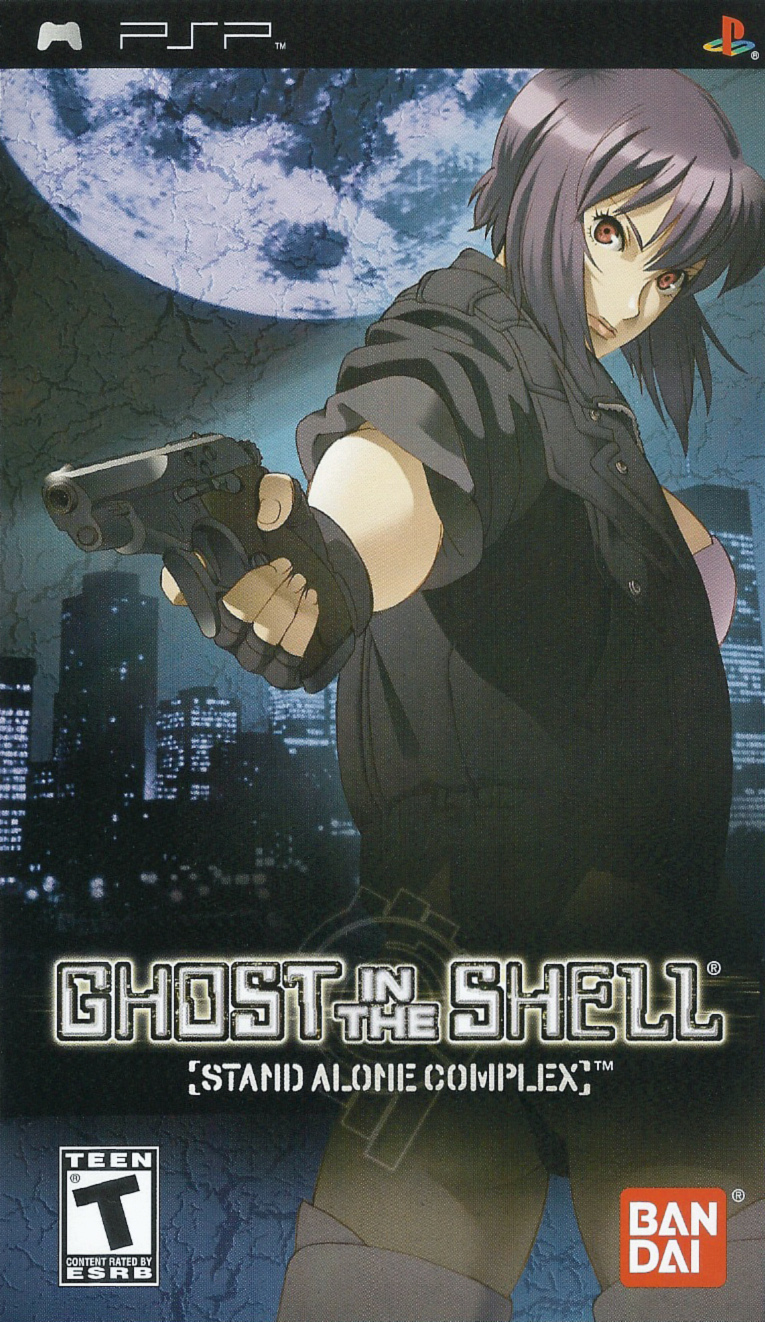 |
Ghost in the Shell: Stand Alone Complex
Developer: G-Artists |
Posted on: March 8, 2017
